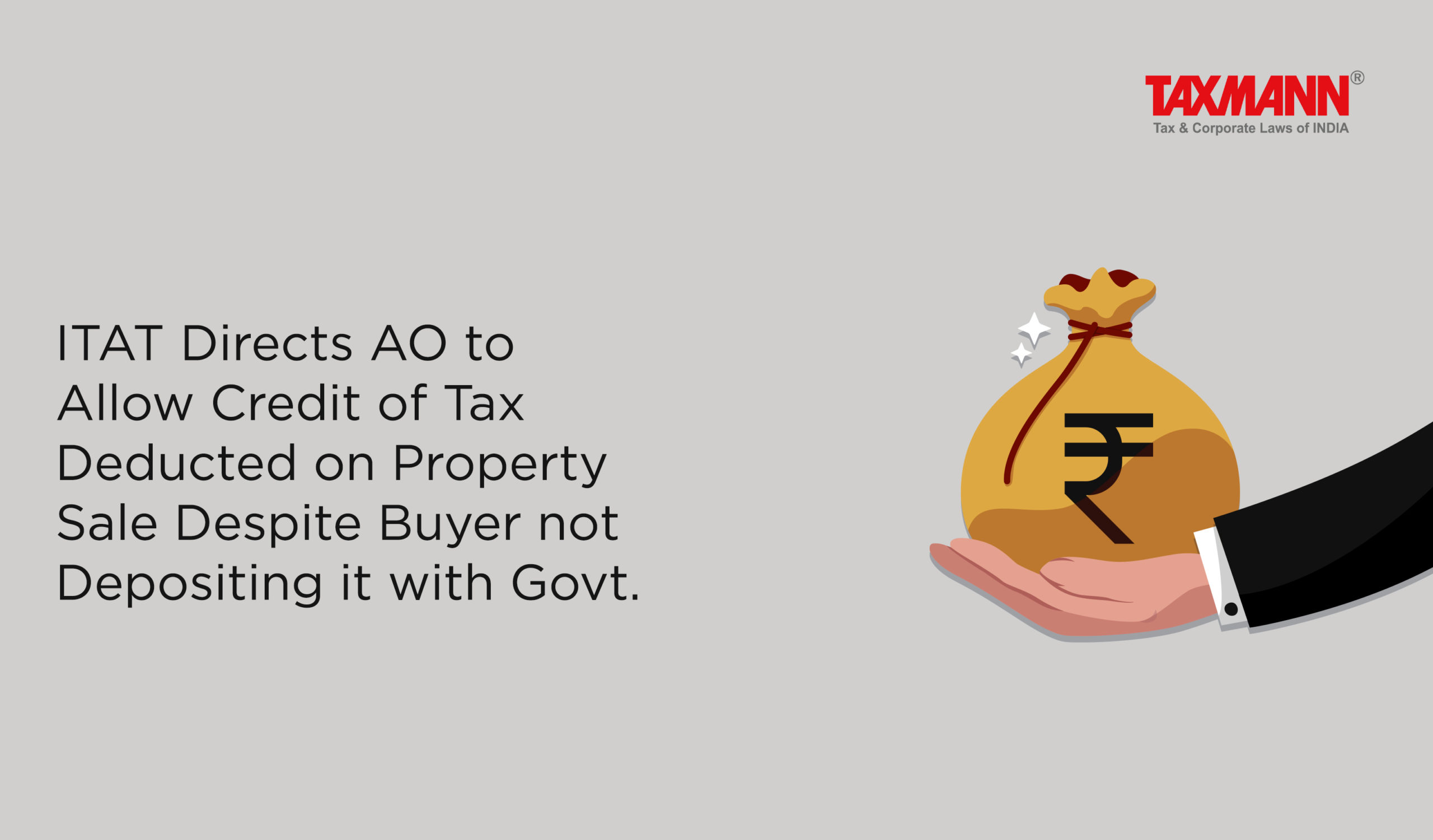ITAT Directs AO to Allow Credit of Tax Deducted on Property Sale Despite Buyer not Depositing it with Govt.
- Blog|News|Income Tax|
- 2 Min Read
- By Taxmann
- |
- Last Updated on 1 August, 2023
Case Details: Rajesh Dadu v. Deputy Commissioner of Income-tax - [2023] 152 taxmann.com 224 (Hyderabad-Trib.)
Judiciary and Counsel Details
-
- R.K. Panda, Accountant Member & K. Narasimha Chary, Judicial Member
- B. Radha Krishna, CA for the Appellant.
- K.P.R.R. Murthy, CIT (DR) for the Respondent.
Facts of the Case
During the year under consideration, the assessee-individual sold a property for a consideration exceeding Rs. 50 Lakhs. The purchaser deducted tax under section 194-IA at the rate of 1 percent of the sale consideration amount and paid the balance amount to the assessee.
However, the purchaser failed to deposit the tax, so deducted from Government’s account and had not given the assessee the required Form 16B for deduction of tax at source. The assessee furnished its return of income and claimed credit of said TDS amount.
Subsequently, the same was disallowed by Centralized Processing Centre (CPC), stating that the tax deducted was not deposited to the credit of the Government.
On appeal, CIT(A) upheld the order of CPC. Aggrieved by the order, an instant appeal was filed to the Delhi Tribunal.
ITAT Held
The Tribunal held that perusing the agreement of sale cum GPA shows that the purchaser deducted the amount as TDS and surcharge at the rate of 1 per cent of the total sale consideration.
Under these circumstances, it is to be seen whether the assessee is liable for deposit/payment of the tax already deducted by the purchaser but not deposited or given credit.
Once the deductor has deducted the tax at source, withholds tax out of payments due/paid to the assessee, but does not deposit the tax withheld by it, the assessee should not suffer for the same and due credit of the tax is to be given to the assessee. The action under the provisions of the Income-tax Act can be taken against the deductor who, after deducting the tax, has not deposited the same to the credit of the Central Government.
The tax credit benefit to the assessee cannot be denied, and the only option left for the department is to proceed against the deductor by holding him as an assessee-in-default. Therefore, the order of the Commissioner (Appeals) was set aside, and the CPC was directed to give due credit to the assessee.
List of Cases Reviewed
-
- Smt. Anusuya Alva v. Dy. CIT [2005] 147 Taxman 152/278 ITR 206 (Kar.) (para 13) followed.
List of Cases Referred to
-
- Yaspal Sahni v. Rekha Hajarnavis, Asstt. CIT [2007] 165 Taxman 144/293 ITR 539 (Bom.) (para 7)
- Smt. Anusuya Alva v. Dy. CIT [2005] 147 Taxman 152/278 ITR 206 (Kar.) (para 7)
- Asstt. CIT v. Om Prakash Gattani [2001] 117 Taxman 549/[2000] 242 ITR 638 (Guj.) (para 7)
- Aricent Technologies Holding Ltd. v. Addl. CIT [IT Appeal No. 5708 (Delhi) of 2019, dated 23-12-2019] (para 7).
Disclaimer: The content/information published on the website is only for general information of the user and shall not be construed as legal advice. While the Taxmann has exercised reasonable efforts to ensure the veracity of information/content published, Taxmann shall be under no liability in any manner whatsoever for incorrect information, if any.

Taxmann Publications has a dedicated in-house Research & Editorial Team. This team consists of a team of Chartered Accountants, Company Secretaries, and Lawyers. This team works under the guidance and supervision of editor-in-chief Mr Rakesh Bhargava.
The Research and Editorial Team is responsible for developing reliable and accurate content for the readers. The team follows the six-sigma approach to achieve the benchmark of zero error in its publications and research platforms. The team ensures that the following publication guidelines are thoroughly followed while developing the content:
- The statutory material is obtained only from the authorized and reliable sources
- All the latest developments in the judicial and legislative fields are covered
- Prepare the analytical write-ups on current, controversial, and important issues to help the readers to understand the concept and its implications
- Every content published by Taxmann is complete, accurate and lucid
- All evidence-based statements are supported with proper reference to Section, Circular No., Notification No. or citations
- The golden rules of grammar, style and consistency are thoroughly followed
- Font and size that’s easy to read and remain consistent across all imprint and digital publications are applied








 CA | CS | CMA
CA | CS | CMA


